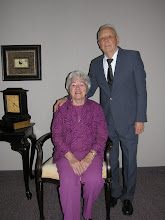
Port of
Joppa-
JaffaAt Haifa, we had an outstanding view of the city and harbor, the river Kishon and the Mediterranean. We traveled along the coastal road to Cesarea, the ancient port founded in 22 B.C. by Herod the Great. The ancient ruins recall the preaching of Peter and the suffering of Paul. Peter baptized the centurion, Cornelius and his family here, the first Gentile converts (Acts 10). Paul was imprisoned here for two years before being sent to Rome for trial (Acts 23-26).
Sunset over the Mediterranean Sea was beautiful to behold and I was moved to write this poem:
Mighty Waves
Roar on Sea, send your waves,
Pound the shore in clouds of spray.
Fierce and mighty, never ceasing,
Always rolling, night and day,
Roar on Sea, I hear message,
Roar On.
Roll in Sea, come closer,
Now release mighty breakers,
Lap the shore, then fade away,
Spread and leave your treasures,
Roll in Sea for us to enjoy,
Roll on.
Having spent the night at Hezeliah a suburb of Tel Aviv, we were also able to watch the sunset over the Mediterranean, and view the many summer resorts here.
The Port of Jaffa at Tel Aviv was where Jonah embarked on his ill-fated voyage to Tarhish (Jonah 1:3).
The Apostles recorded that while in the house of Simon the Tanner, Peter had the strange vision touching on the baptism of the centurion, Cornelius. In Yafo, Biblical Joppa (Jaffa) Peter raised Tabitha from the dead (Acts 9:40)
.Having spent the night at Hezeliah, a suburb of Tel Aviv, we were also able to watch the sunrise over the Mediaterranean, and view the many summer resorts there.
It was from Yafo, Biblical Joppa (Jaffa), 70 miles down the coast, that Jonah embarked on his ill-fated voyage to Tarshiah (Johah 1- 3)
This series on the Holy Lnad started October 6th.



























